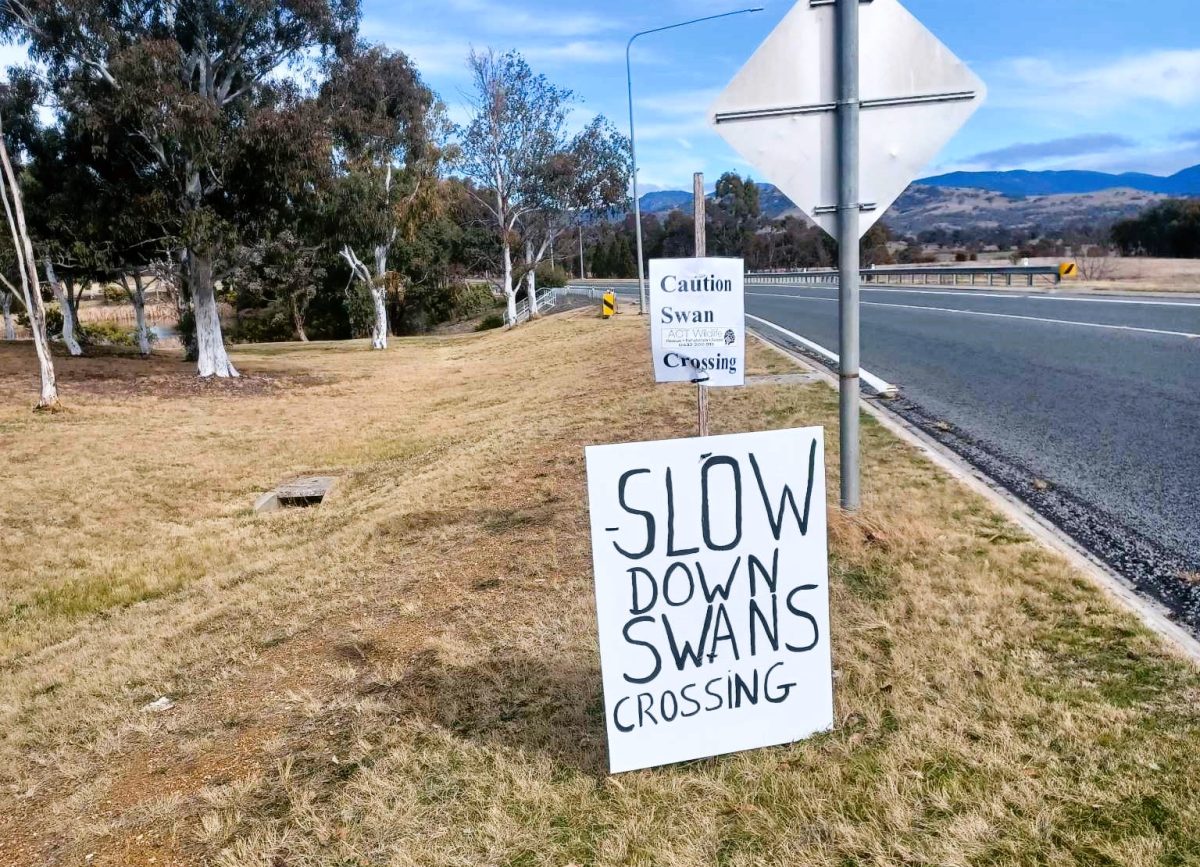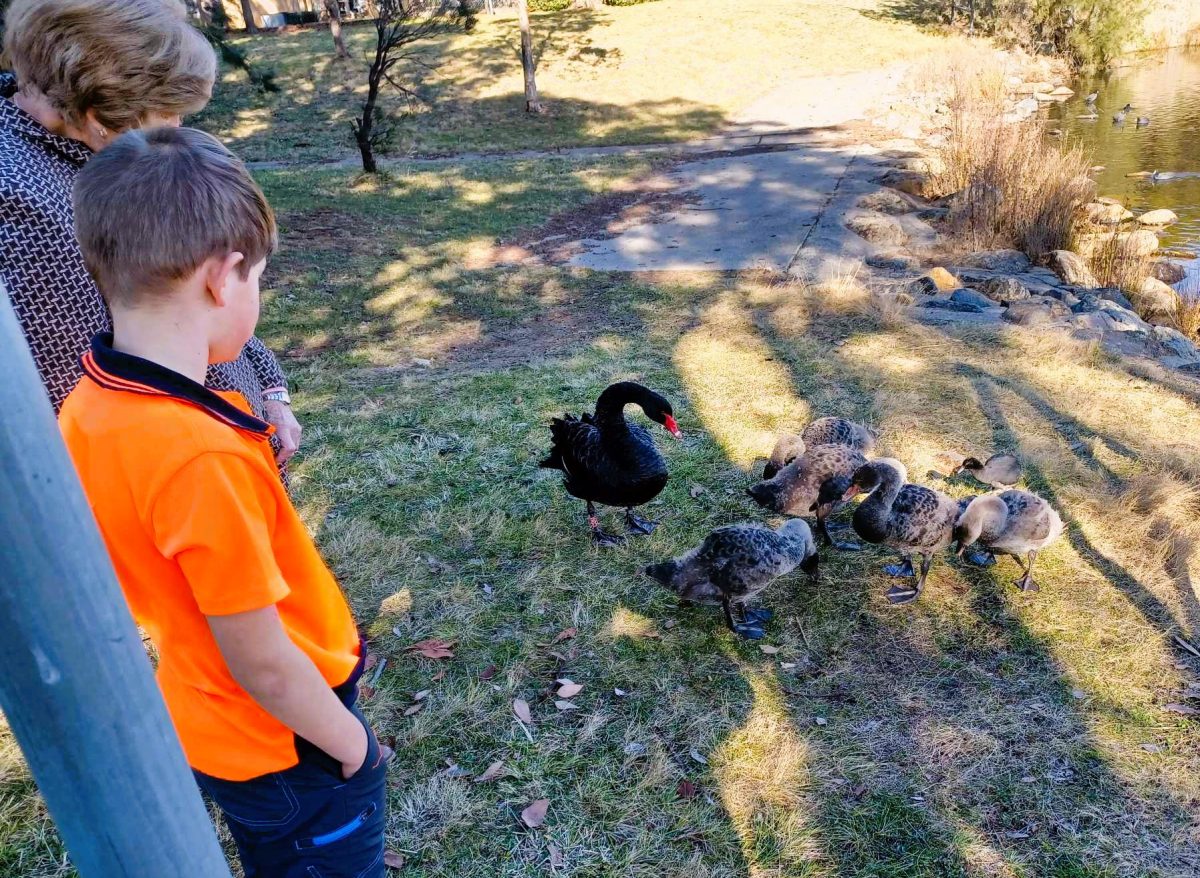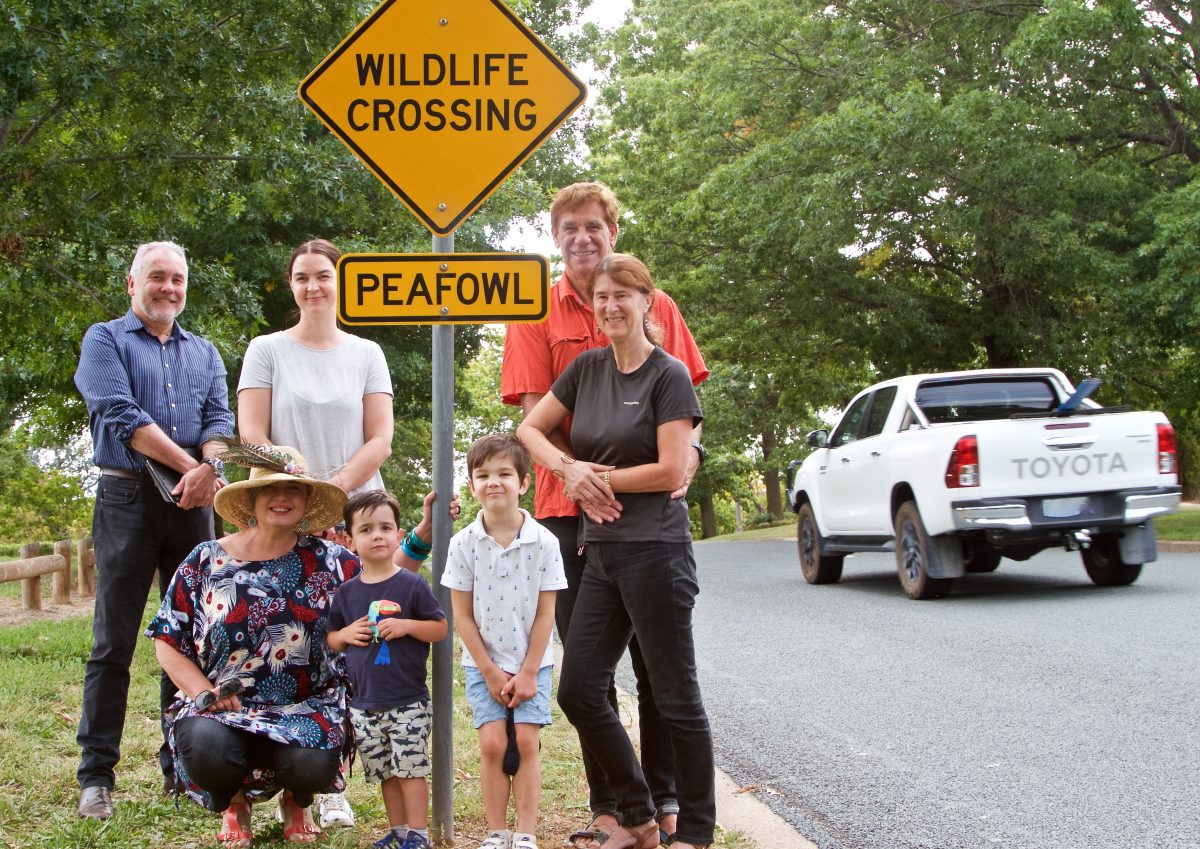
A swan crossing on Woodcock Drive, Gordon, where residents have erected their own signs warning motorists. Photo: Mal Barnett.
Why did the swans cross the road?
No-one is quite sure, but a family of black swans is playing Russian roulette with cars on a major road in Gordon, prompting local residents to take matters into their own hands with an array of handmade signs warning motorists to slow down.
Mal Barnett has lived near Gordon Pond, adjacent to Woodcock Drive, in the ACT’s south for 20 years and says swans have come and gone in the area the whole time.
“They come, have their young and then you’ll go back one day and they’re all gone,” he says.
The small pond is circled by a walking track that runs along the Murrumbidgee River towards Point Hut Crossing, so the swans have become a beloved feature of the area.
“There’s one little kid who’s always down there, working in the garden around the pond, and he’s about six or seven years old going on 60 – he could tell you everything about the swans,” Mal laughs.
“All our neighbours around here go down to feed them and to check up on them.”
Until recently, the grass was green enough on their own side and the swans never ventured across the road.

Black swans are a beloved feature at Gordon Pond. Photo: Mal Barnett.
“I don’t know whether that’s because all the reeds have grown quite large in the pond or if they don’t feel safe, but they’re forever in the middle of the road now, and people are pulling up in their cars,” Mal says of them now.
There were already paper signs mounted to star pickets installed on either side of the road, but Mal decided to make another that couldn’t be missed, using some old board in his garage.
“Even when I was putting the bloody sign up, there was about 30 cars all waiting for the swans to cross. The swans aren’t quick about it, either – they sort of ruffle around in the middle.”
Mal admits the risk to the swans is “just the world we live in” but he and the other residents feel compelled to do their bit to prevent a ”foul”.
Ideally, they would like to see an official yellow animal crossing sign installed, like the one for kangaroos further down the road.
“We live in a great city, and I think we need to look after our wildlife where we can,” Mal said.
In the past, these signs have been installed at locations across the ACT considered hot spots for wildlife and vehicle collisions, either based on crash data history or evidence of wildlife crossings.

A wildlife crossing sign in Narrabundah, requested by Save the Narrabundah Peafowl group members in 2021. Photo: Michael Weaver.
However, an ACT Government spokesperson says they were ditched after several studies revealed little change to driver behaviour.
“They can be ignored by motorists when the particular animal is not seen regularly and instead create more visual distractions,” the spokesperson says.
“For these reasons, the ACT Government no longer use animal warning signs on the urban road network [such as Woodcock Drive]. Signage and other measures such as animal fencing are considered on higher-speed roads [such as the Monaro Highway] on a case-by-case basis.”
While the Government “appreciates the intent”, the spokesperson says members of the public “are not permitted to install their own signage by the roadway as this can create a road safety hazard or interfere with essential underground services”.












